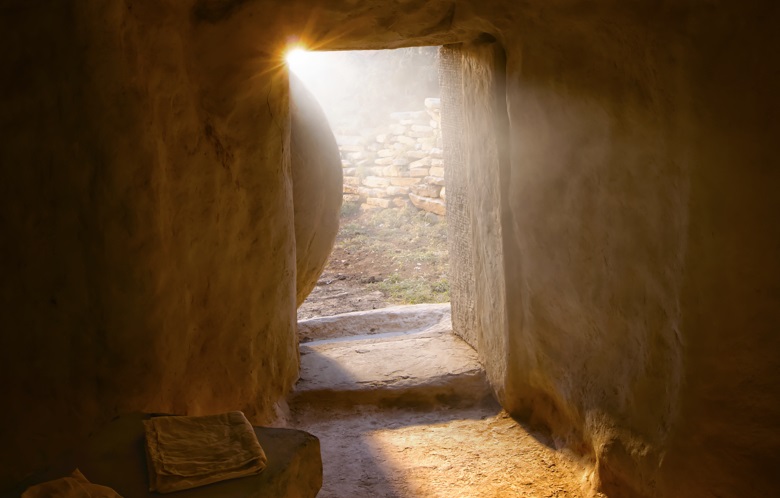Washington, D.C. (USA), Sr. Luz Amparo Cárdenas, April 4, 2021.- The empty tomb.
Download in PDF: Lectio Divina - Easter - 04-04-2021 eng Download
GOSPEL
Jn 20: 1-10. Seekers of the signs of the Risen Lord

STUDY OF THE TEXT
The Resurrection of Christ is the foundation of our faith. John the evangelist, presents us three individuals, each one with a different reaction as they faced the same scenery, The Empty Tomb: Mary Magdalene, Peter and John.
The Gospel tells us that on the first day of the week Mary Magdalene came to the tomb early in the morning while it was still dark, and saw the stone removed from the tomb (20:1).
Caught off guard by the empty tomb, Mary ran back to Simon Peter and the beloved disciple and told them: They have taken the Lord from the tomb, and we do not know where they put Him (20:2). Mary in her sadness believed that someone had broken into the tomb and had taken Jesus’ body. She did not think that Jesus was Risen, she simply said: “They have taken the Lord from the tomb, and we do not know where they put Him.” (20:2)
Informed by Mary Magdalene, Peter and John ran to the tomb to see it by themselves (20:3). What were they thinking as they went running to the tomb?
The beloved disciple ran faster than Peter and arrived to the tomb first (20:4). The impulsive Peter went straight to the tomb. On the other hand, John lingered. What would I have done in this case? How might I have reacted?
Then the other disciple who had reached the tomb first also went in: he saw and believed (20:8).
Simon Peter arrives after him, went into the tomb and saw the linen cloths, and the cloth that had covered his head, not with the other cloths but rolled up in a separate place (20:7).
Peter and John realized that something was different when they saw the cloth which had been over Jesus’ head rolled up in a separate place (20: 7). It showed an orderly, peaceful and glorious departure.
The empty tomb left the disciples with questions but not answers. They did not make an immediate leap of faith to the resurrection.
We might wonder why Mary Magdalene and the two apostles who ran to the tomb had forgotten what Jesus said about ‘being put to death and risen from the dead’ (Jn 2:22).
MEDITATION
Only love and the desire to respond to the first initiative of love coming from Jesus, speeds John on his way to Him and to some extent, his faith in the Resurrection. John had experienced Jesus’ love for him and it was mutual. This is why John’s reaction to the empty tomb is gentle, and cherished in his heart, because of his love for Jesus and his faith.
Mary Magdalene’s personal grieving moved her to go to the tomb, early in the morning while it was still dark (20:1). What was her motivation for such an action?
So, she ran, and goes to tell the disciples… (20:2). Again, love doesn’t wait, and Mary like John had experienced a reciprocal love with Jesus.
The empty tomb gives us the message that nothing is final in this life, not even death. God’s love is stronger than any human power, stronger than death (cf. Song of Songs 8:6). God’s love conquers everything.
We are called to be witness of the Resurrection of Christ when His light brightens and penetrates the dark moments of our life and His love transforms our grieving, sadness and confusion into joy to be people of hope; thus, we become Easter people.
Just as the disciples returned home after the Resurrection, we too go home to meditate, to contemplate and ponder about the meaning of this extraordinary event for our lives.
PRAYER
like a seal on your arm.
Set me like a seal on your heart.
How right it is to love you
CONTEMPLATION
No one saw the Resurrection. Only a personal encounter with the Risen Lord can bring about Easter faith. I too ask for the grace to grow in my understanding of this great mystery.
Let us open our hearts and let the “stone” of selfishness and complacency roll away so that the Light of Christ may strengthen our faith and reaffirm us in His love.
-
What stone would I need to remove from my life so that my faith may be a resurrection light to others, to those around me?
[1] Carey Landry, “Like a Seal on your Heart”


 EN
EN  ES
ES  FR
FR 



